The German Environment Agency has been publishing a report on the use of natural resources in Germany since 2016. After 2016 and 2018, a new "Resource Report for Germany" was compiled and published in 2022 (resource report 2022).
The UBA resource report examines statistical key figures and trends in the "thematic field of resource and raw material use", analyses and discusses the diverse relationships between resource extraction, resource consumption and economic development and summarises individual subtopics. The current report deals with around 30 resource-related sub-topics in a modular fashion (report summarised in a factsheet).
The focus is on analysing and examining renewable and non-renewable raw materials. A distinction is made between the four main raw material groups "non-metallic minerals", "biomass", "metal ores" and "fossil fuels". Further chapters deal with the utilisation of the natural resources "water" and "land", the consideration of the interfaces between individual resource categories ("nexus") and the "environmental impact of raw material extraction".
The resource report is aimed at a specialist audience and interested parties from the fields of business, civil society, including education, as well as politics and administration. On the one hand, the report is intended to serve as a source of data information and a reference work; on the other hand, it provides arguments for scientific policy advice and the development of measures for ecologically sustainable resource management.
The next resource report is planned for 2026. The research work for this will begin in early 2024.
Research project „Resource use in Germany“ (Resource Report for Germany)
Period: 2014 – 2027
Research number: FKZ 3714931050, 3719311050, 3724317020
Contractor (since 2024): Vienna University of Economics and Business; Wuppertal Institute for Climate, Environment, Energy; Gerda Palmetshofer

Raw material extraction
There has been an overall decline in the domestic extraction of raw materials since 1994. Two opposing trends are apparent: a long-term decrease of 35 % in the extraction of abiotic raw materials, and an increase of 15 % in that of biotic raw materials.
Source: UBA Resources Report 2022
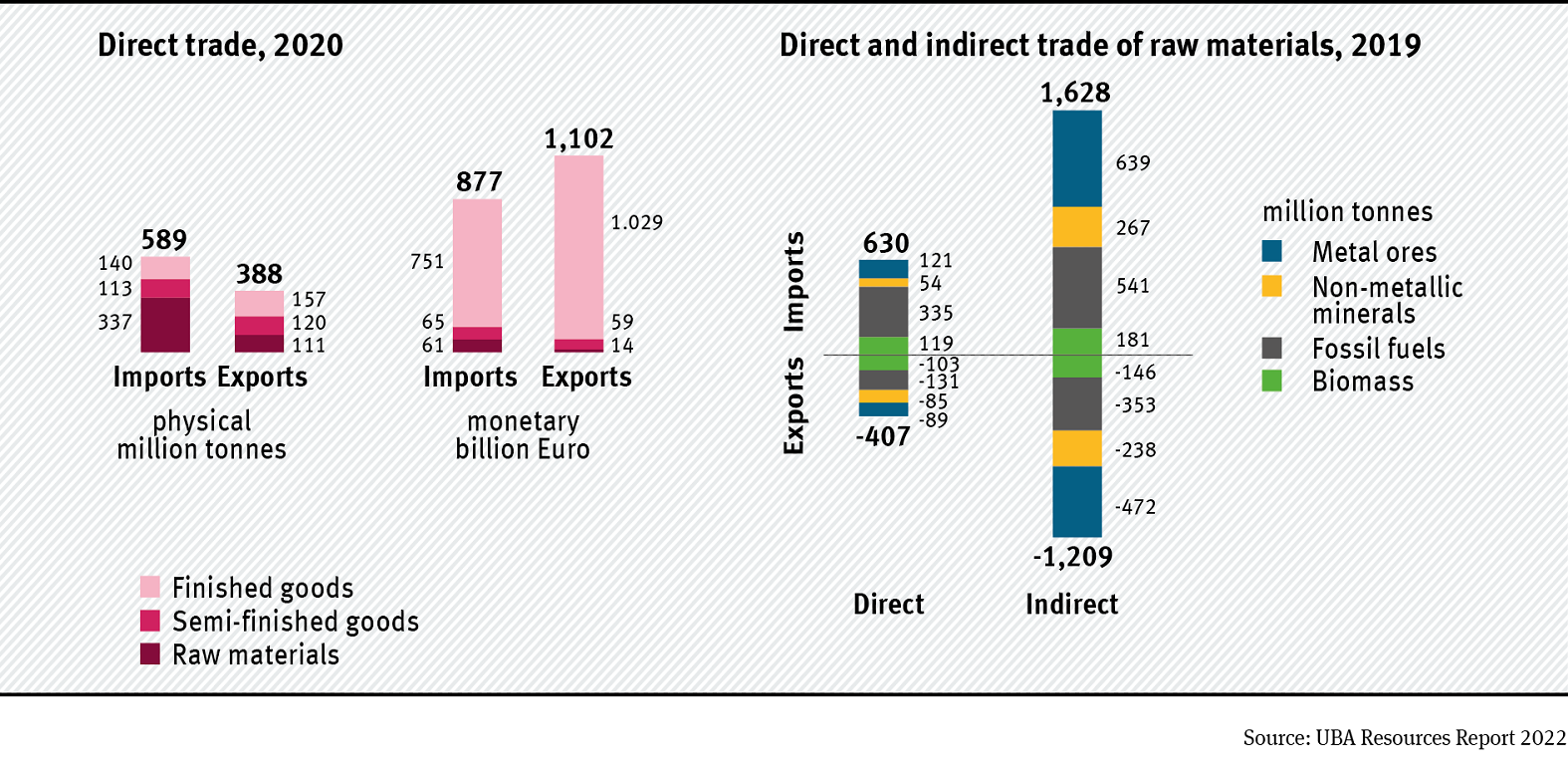
Germany benefits from global trade
Germany benefits from global trade: although it imports, both directly and indirectly, more raw materials and goods than it exports, there is a considerable surplus in its monetary trade balance.
Source: UBA Resources Report 2022
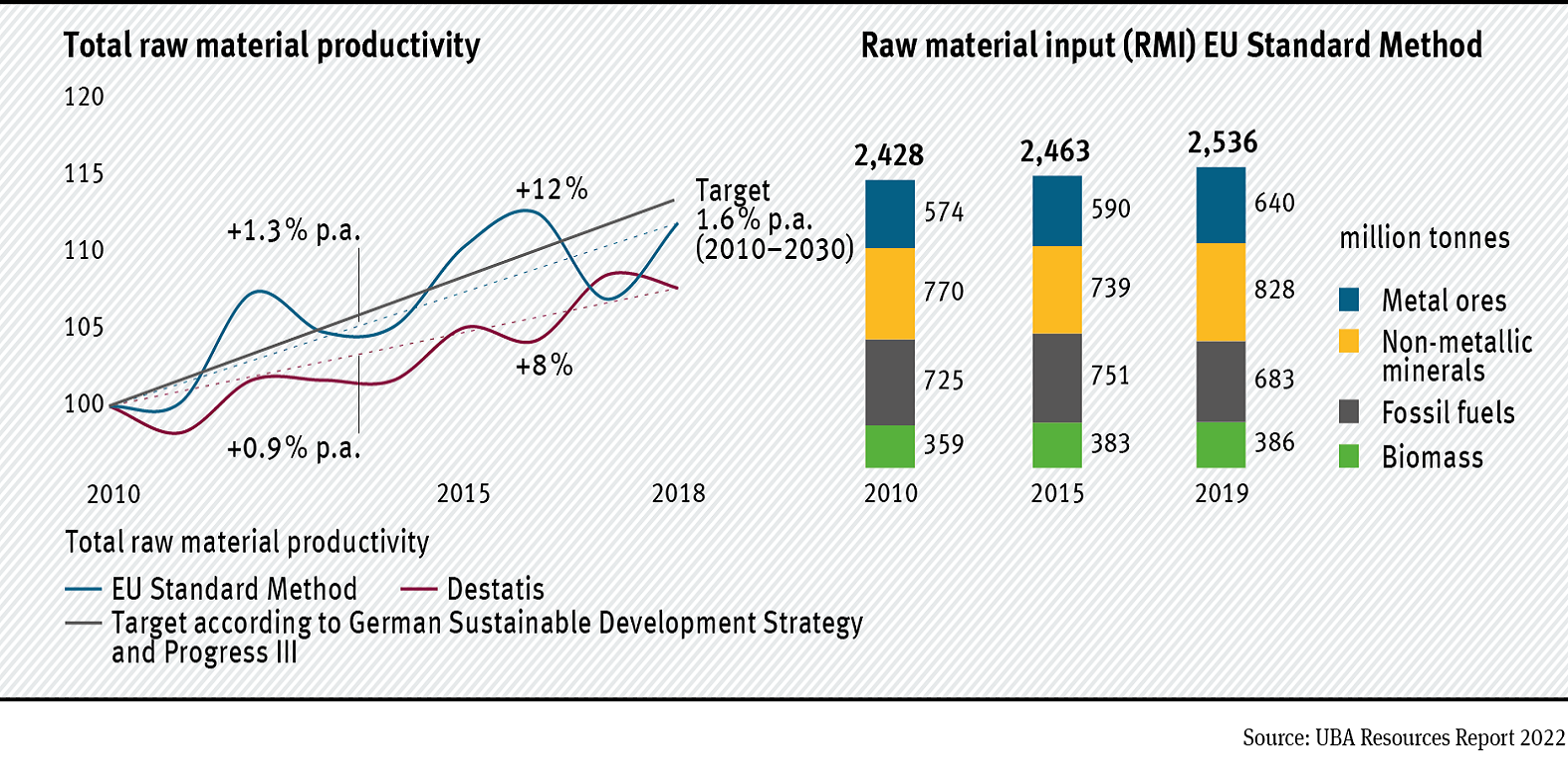
The raw material input of the German economy
The raw material input of the German economy barely altered between 2010 and 2019, and stabilised at a high level in 2019, at 2,536 million tonnes. By 2018, total raw material productivity had risen by 12 % (calculation according to Destatis: 8 %).
Source: UBA Resources Report 2022
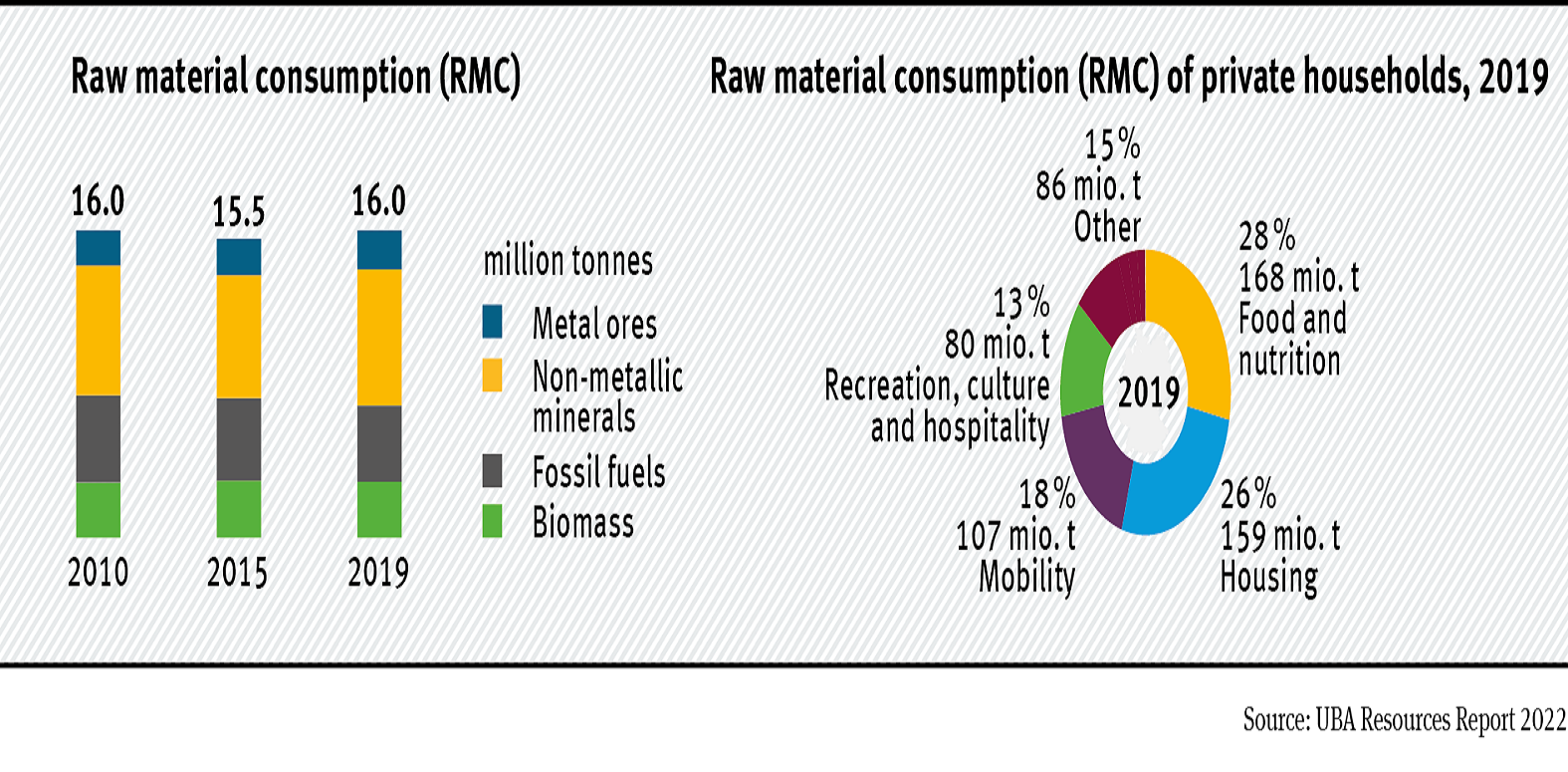
Germany’s raw material consumption
In 2019, Germany’s raw material consumption amounted to 1,328 million tonnes, or 16.0 tonnes per capita. The consumption of raw materials by private households was largest in the areas of food, housing and mobility.
Source: UBA Resources Report 2022
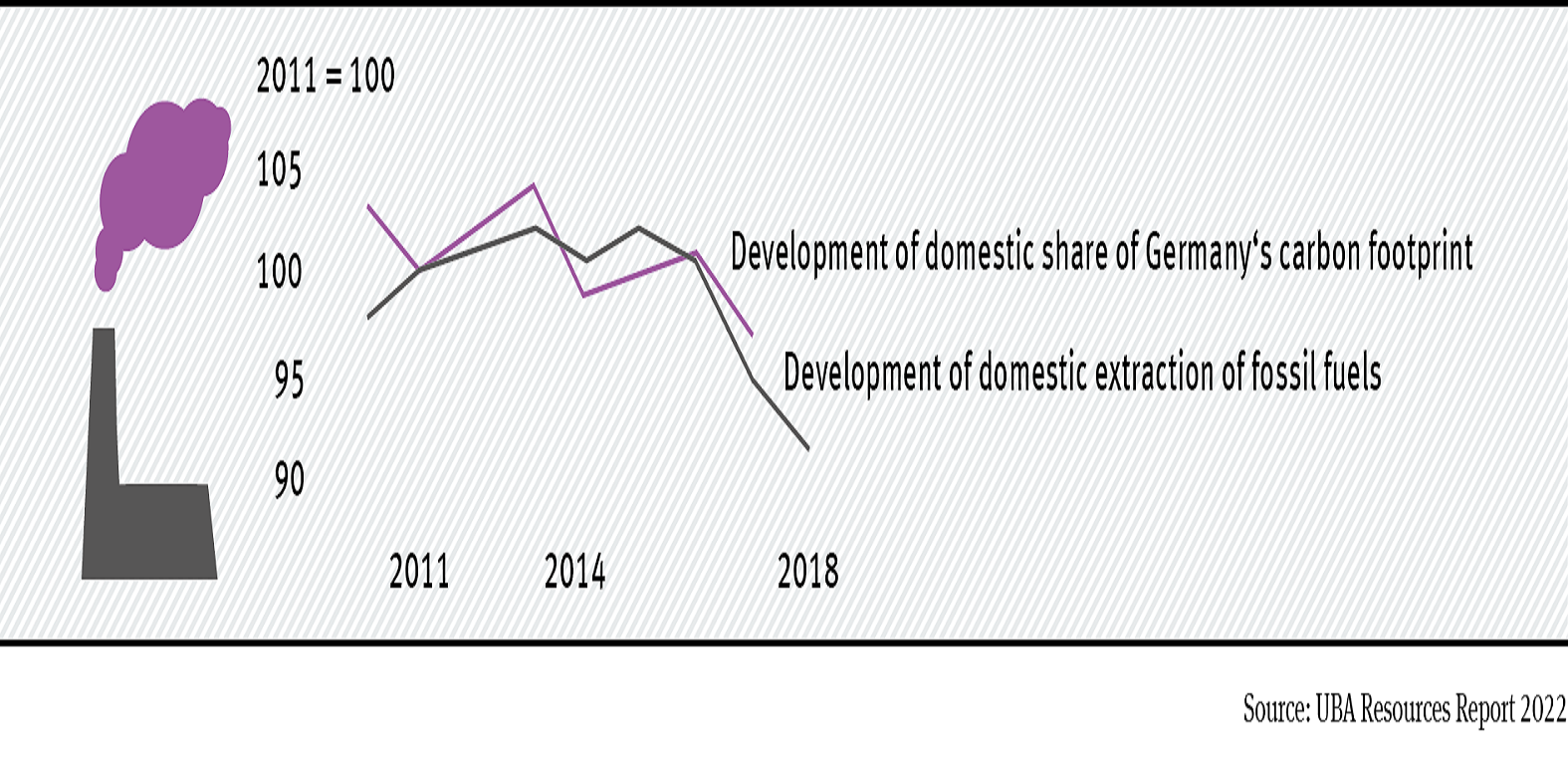
Negative environmental impacts
The extraction and use of raw materials is often associated with negative environmental impacts. In Germany, 40 % of greenhouse gas emissions are attributable to the extraction and initial processing of raw materials.
Source: UBA Resources Report 2022
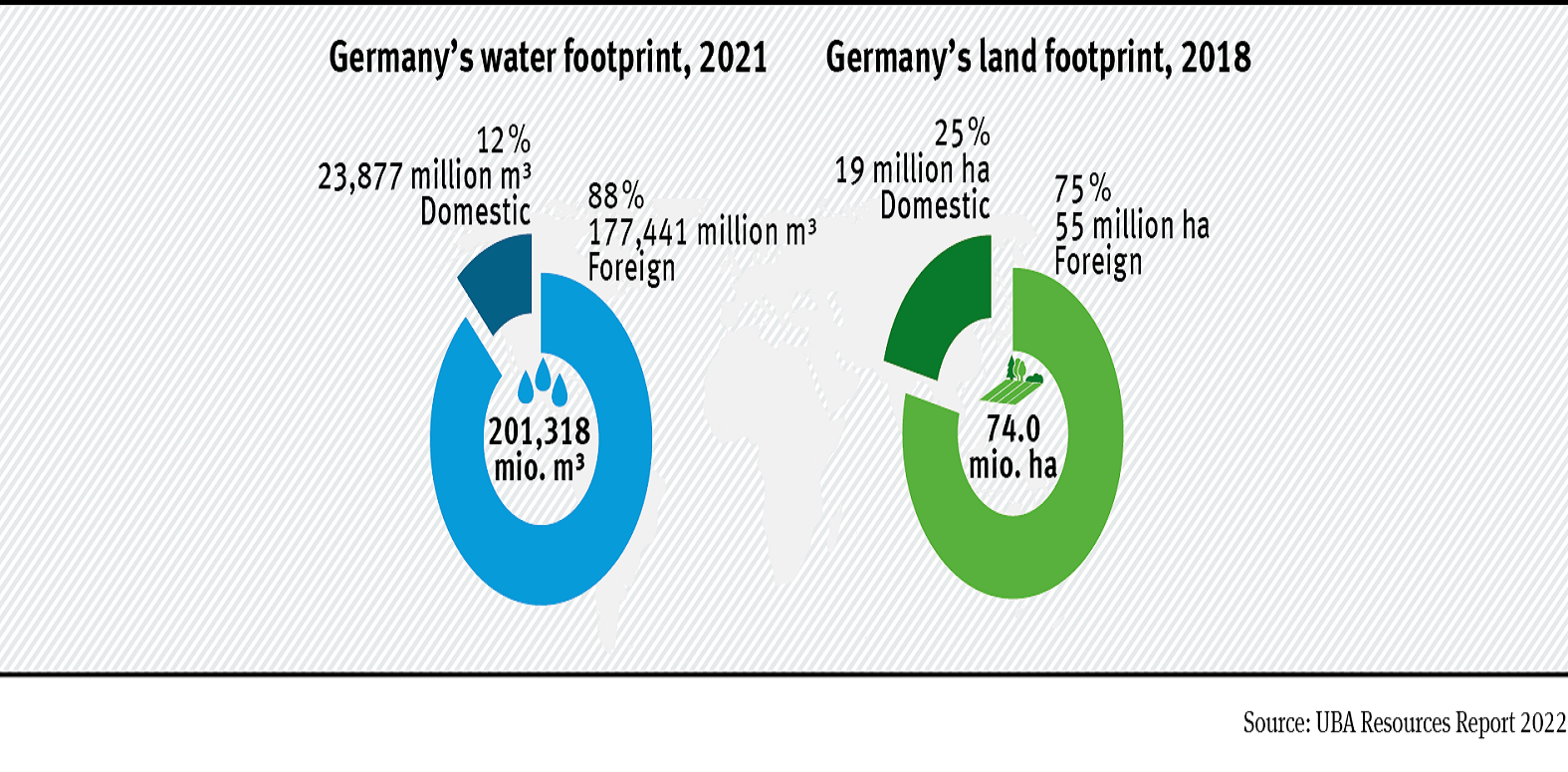
Nexus water and land footprint
There is a nexus (latin for connection) between the use of raw materials and other natural resources. Due to its international supply chains, Germany shares responsibility for the utilisation of resources in other parts of the world.
Source: UBA Resources Report 2022
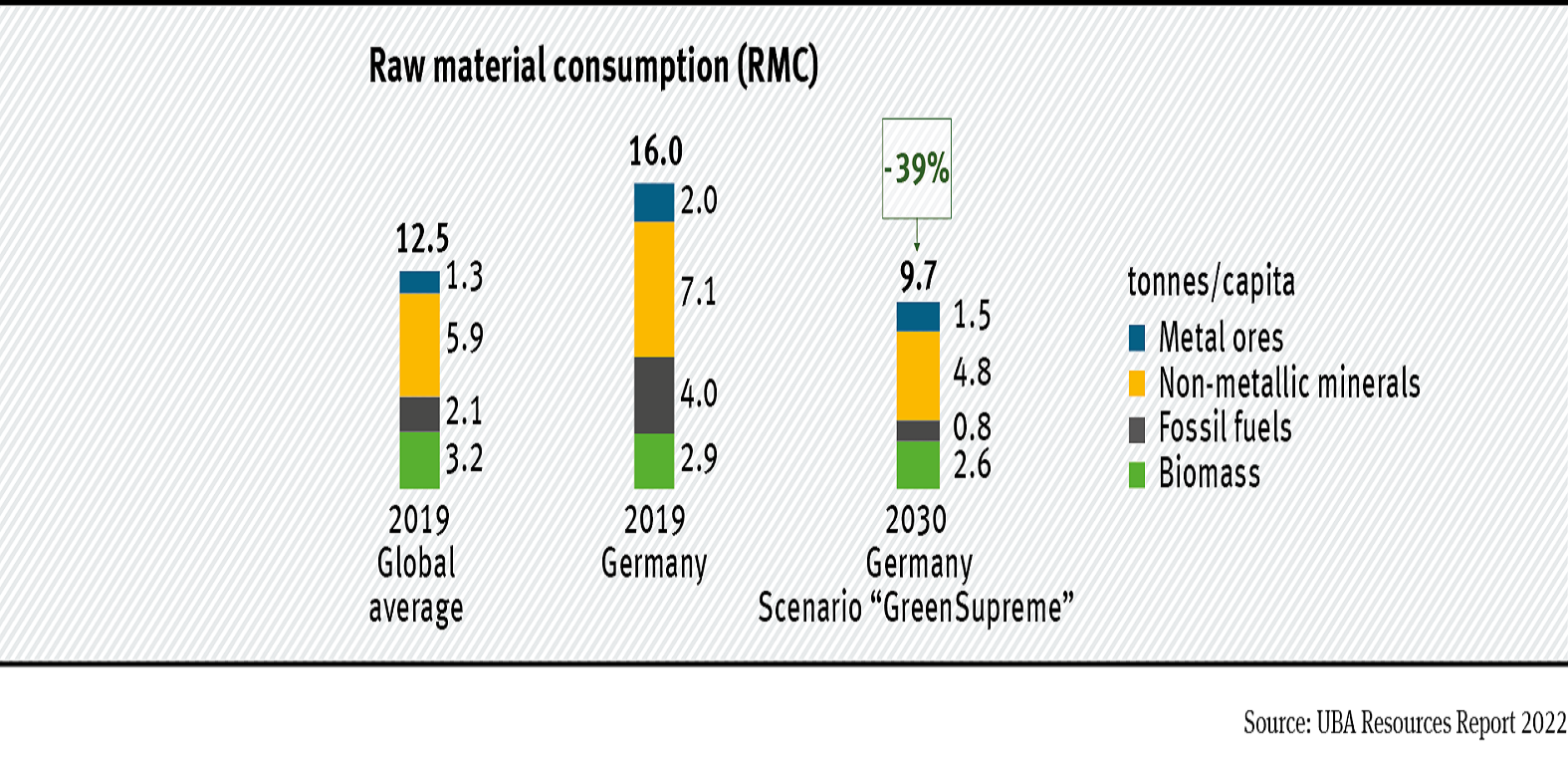
Raw material use in the future
With an ambitious raw materials policy, there is every possibility of considerably more sustainable raw material use in the future. By 2030, Germany could potentially reduce its raw material consumption by more than a third of the amount in 2019.
Source: UBA Resources Report 2022









